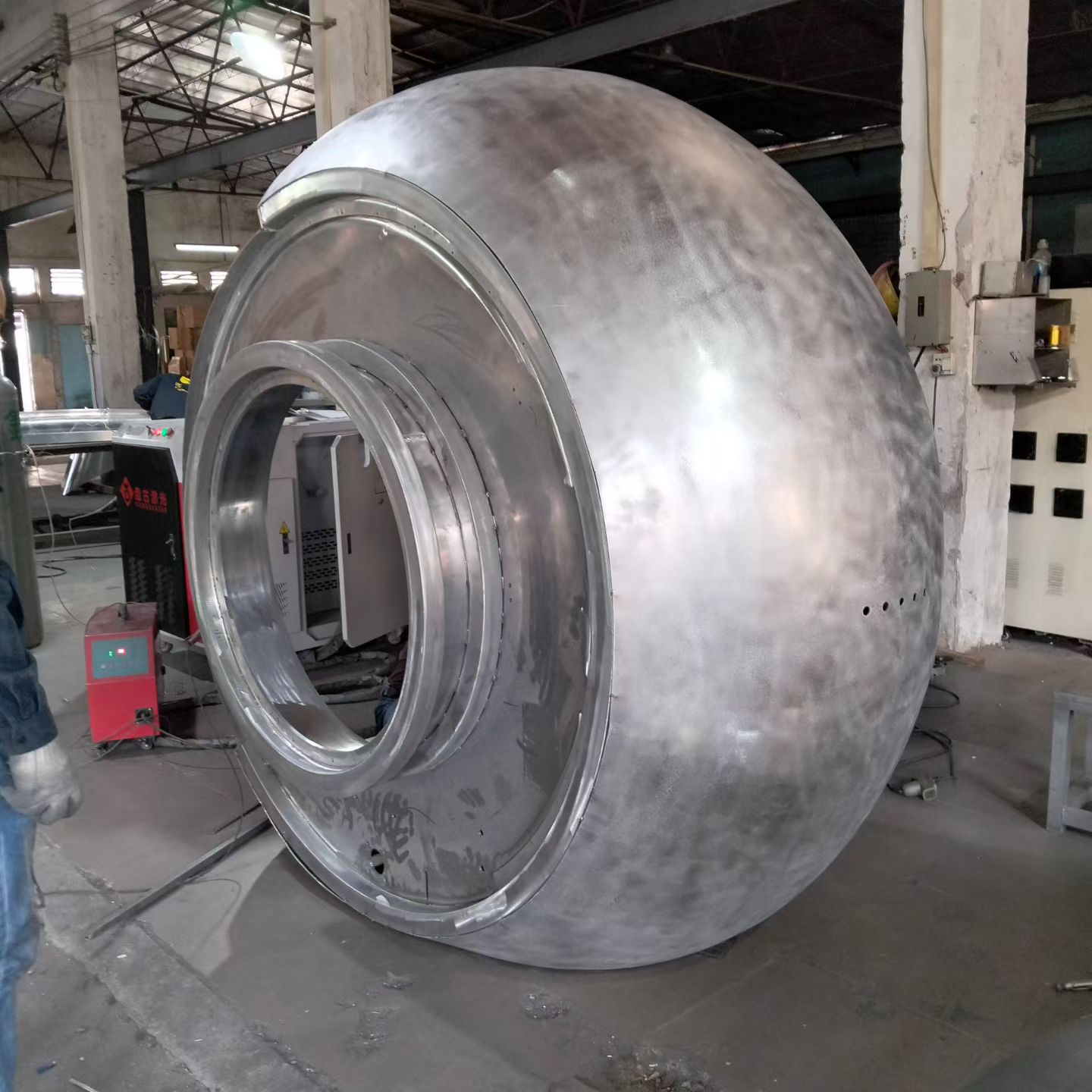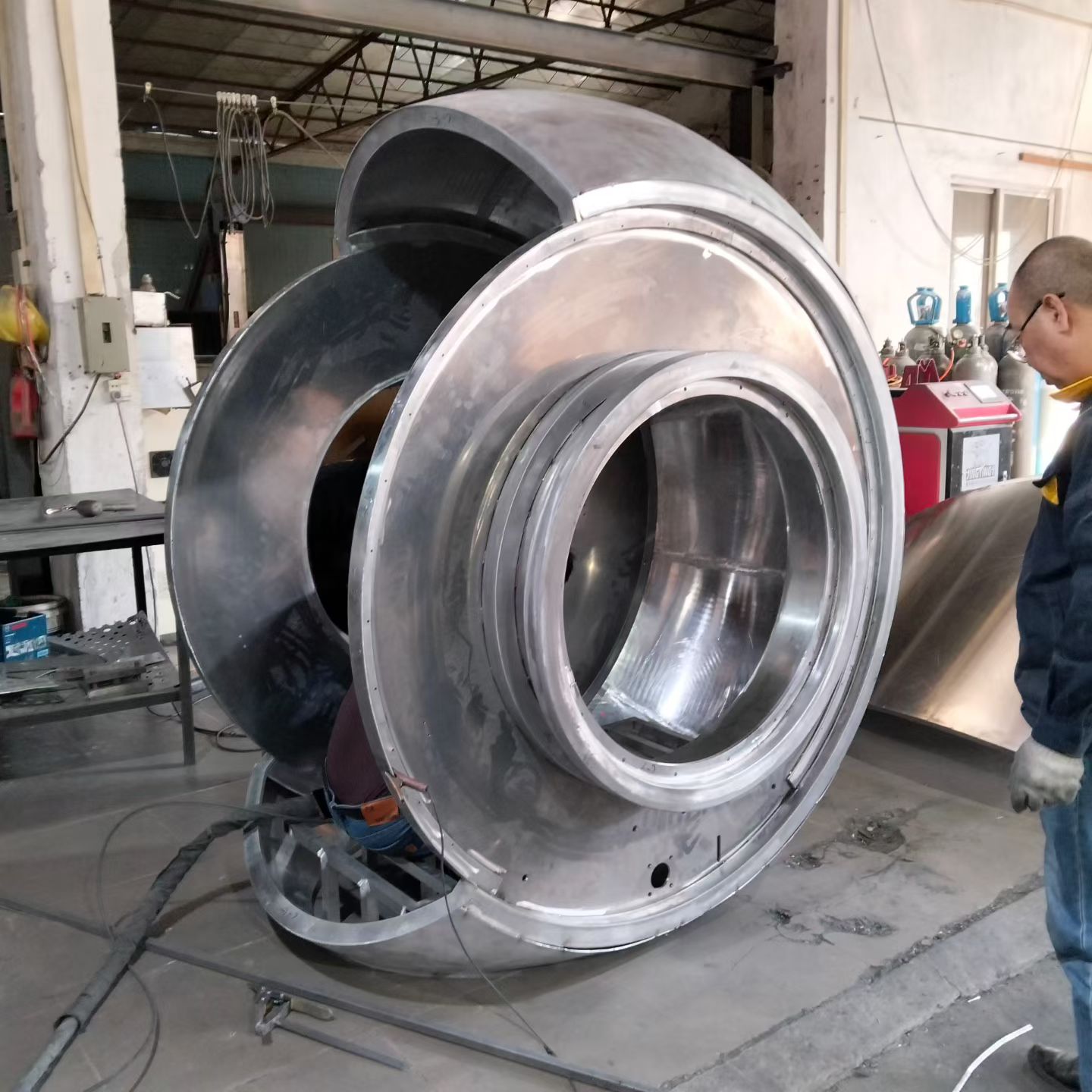Products Description
The production process for spherical aluminum panels is complex and precise, involving several key steps, which mainly include the following:
1. Raw Material Preparation
Material Selection: Select the appropriate aluminum alloy sheet, such as 5052 or 6061, based on the required strength, corrosion resistance, and surface finish. These alloy sheets are typically supplied in coils or as flat sheets.
Blanking: Cut the aluminum sheets to the precise size and specifications required by the design using CNC equipment.
2. Precision Forming
This is the core and most technically challenging part of producing spherical aluminum panels. Depending on the size, wall thickness, and precision requirements of the sphere, various forming techniques can be used:
Die Stamping:
Applicability: Suitable for mass production of hemispherical or spherical components with high dimensional accuracy.
Process: The cut aluminum sheet is placed in a custom mold and pressure is applied with a stamping machine, causing it to gradually deform and take the shape of the mold to form a hemisphere.


Spin Forming:
Applicability: Especially suitable for producing large, hollow, symmetrical rotational parts, such as large hemispheres.
Process: The aluminum sheet is secured to a spin-forming machine, and pressure is applied by a roller, causing the material to gradually deform towards the central mandrel as it rotates, ultimately forming a hemisphere.
Hydroforming:
Applicability: Capable of creating complex spherical components with less reliance on molds.
Process: The aluminum sheet is placed over a die, and high-pressure fluid is used as a medium to apply uniform pressure, deforming the sheet and forming the final shape.
Incremental Sheet Forming:
Applicability: Ideal for small-batch and customized spherical production due to its high flexibility.
Process: A small, spherical tool, controlled by a CNC machine, progressively deforms the aluminum sheet locally to create the spherical or hemispherical shape.
3. Welding and Assembly
Welding: If the sphere is assembled from multiple hemispheres or other shaped parts, high-precision welding is required. Techniques like TIG/MIG welding are typically used to ensure the welds are smooth, strong, and aesthetically pleasing.
Assembly: Accurately align and assemble the various components into a complete sphere.
4. Surface Treatment
Surface treatment is a crucial step for improving the product's appearance and corrosion resistance:
Coating: Powder coating or PVDF fluorocarbon coating is applied to the sphere's surface, offering a wide range of colors and excellent weather resistance.
Anodizing: An electrochemical process creates a dense, hard oxide layer on the aluminum surface, enhancing its abrasion and corrosion resistance while providing a unique metallic luster.
Polishing: Mechanical or chemical polishing is used to achieve a mirror-like finish.
5. Quality Control and Inspection
Dimensional Accuracy Check: High-precision equipment like Coordinate Measuring Machines (CMM) is used to accurately measure the sphere's dimensions, curvature, and shape to ensure they meet design specifications.
Appearance Inspection: Check that the surface treatment is uniform and free of defects.
Performance Testing: Perform performance tests for corrosion resistance, strength, etc., as required.
6. Packaging and Transportation
Properly package the finished products to prevent damage during transportation.


